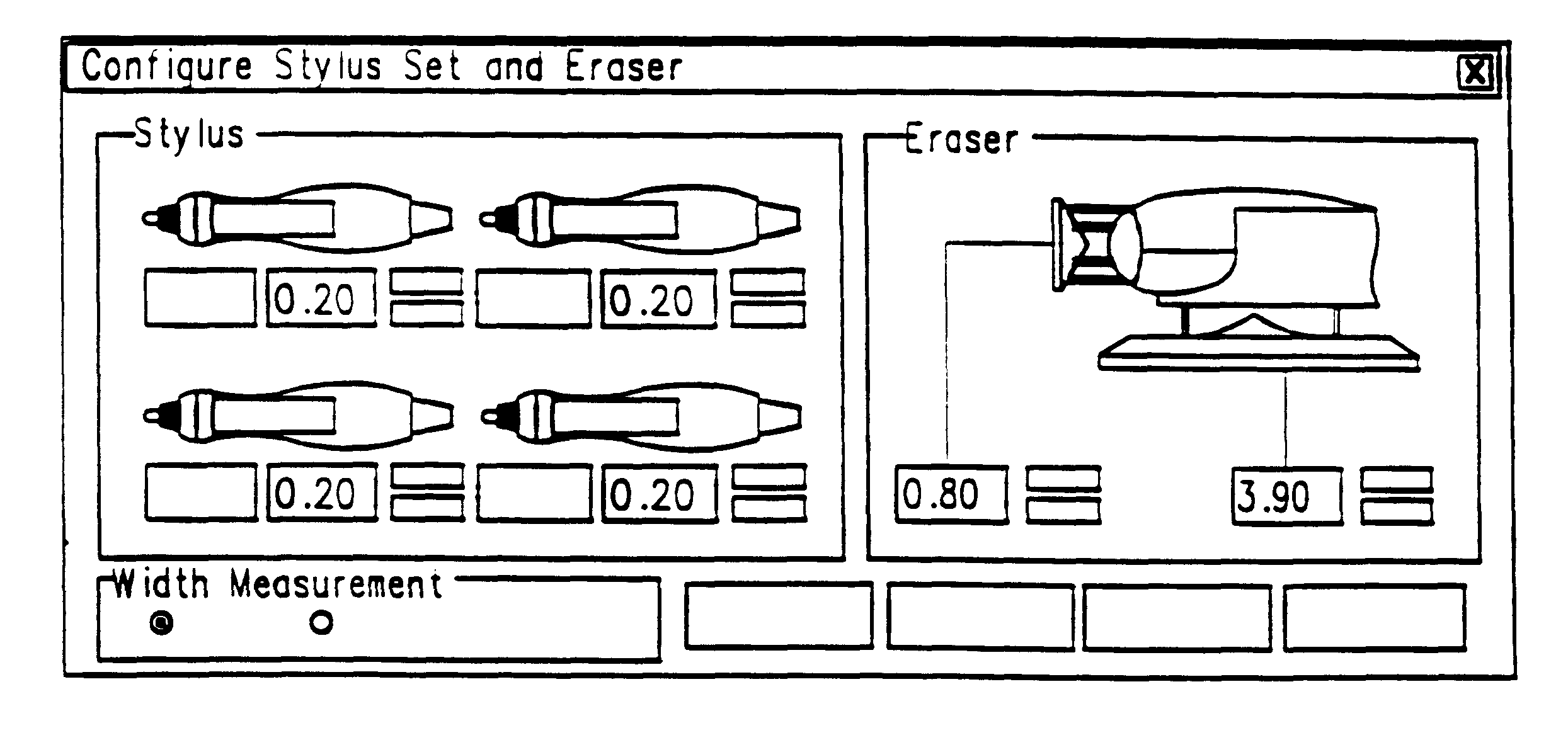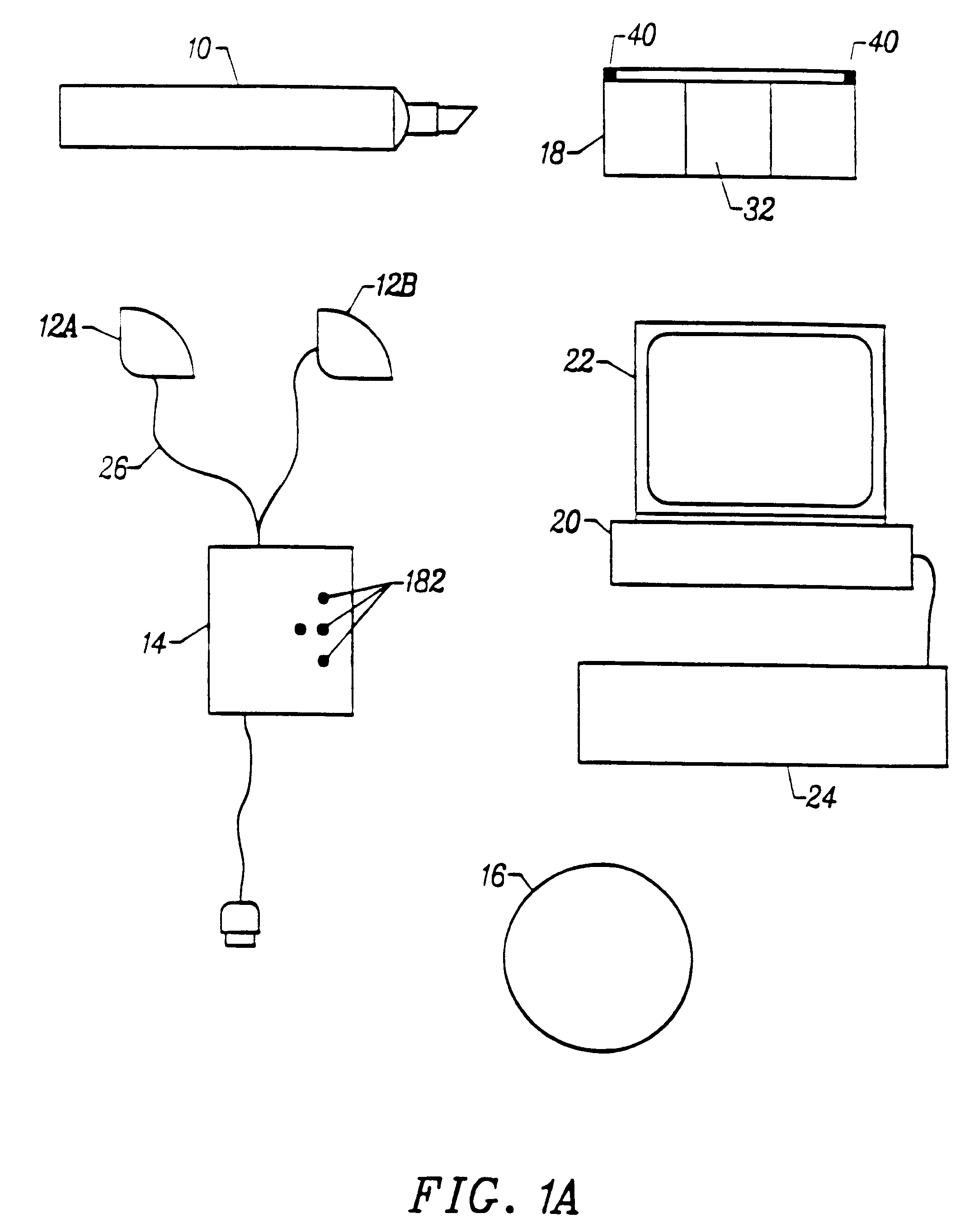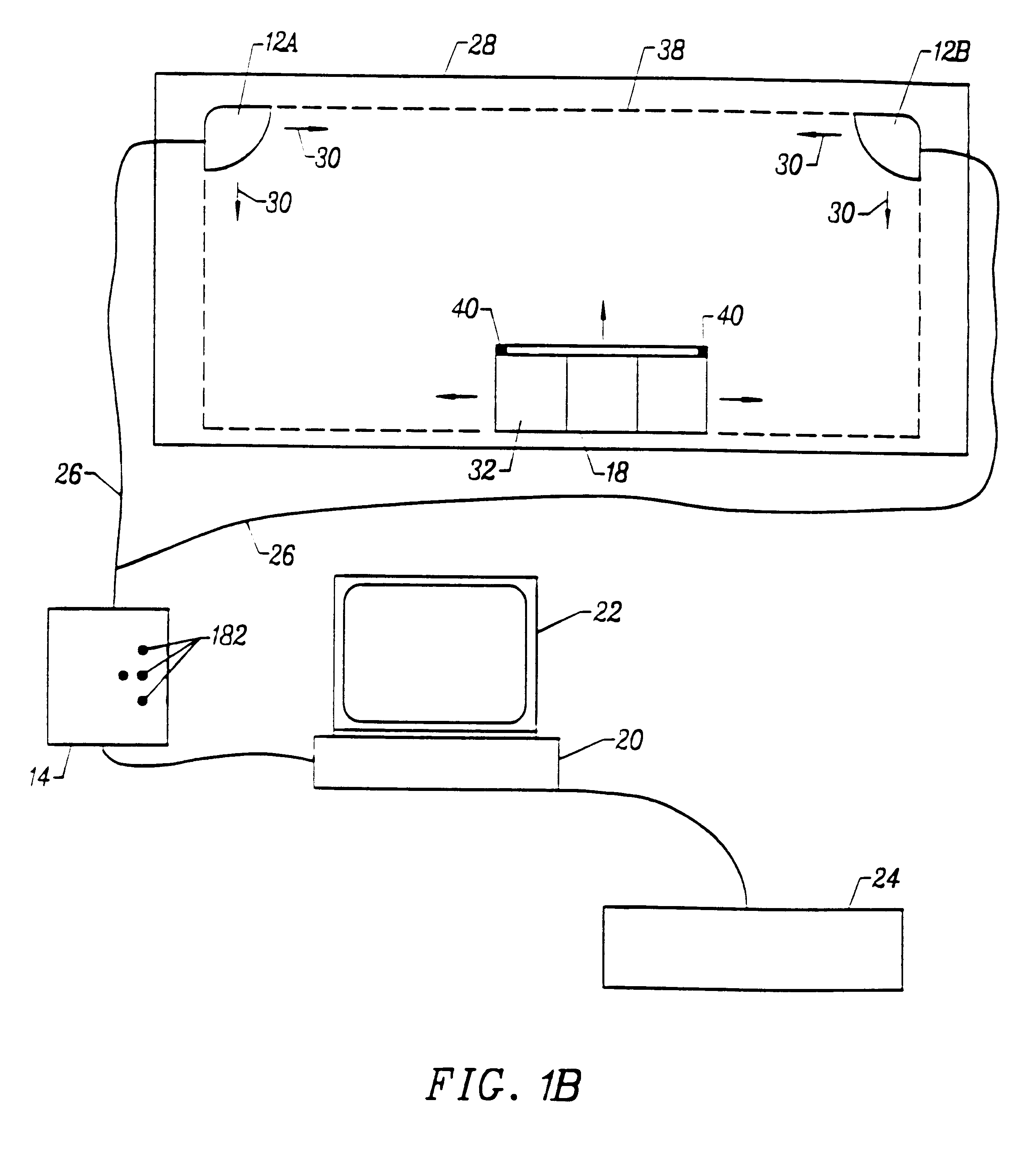Dual mode eraser
a technology of eraser and eraser, which is applied in the field of detection systems for transcription, can solve the problems of large, cumbersome, expensive, and immobile whiteboard systems, and the use of passive electronic boards
- Summary
- Abstract
- Description
- Claims
- Application Information
AI Technical Summary
Benefits of technology
Problems solved by technology
Method used
Image
Examples
Embodiment Construction
The following is an example of a transcription system according to the present invention, its contents and operation. FIG. 21 illustrates a transcription system kit. As illustrated, the kit includes a detector assembly 512, a set of styluses 514, a set of whiteboard markers 516, an eraser 518, and a template 520.
FIG. 22 illustrates a stylus 514 which has been taken apart so that a marker 516 can be placed within the stylus 514. As illustrated, the stylus 514 includes a stylus body 522 which houses a AAA battery 524 and an ultrasound transmitter 526 adjacent a writing end 528 of the stylus. The stylus 514 also includes a side cover 530 which is sufficiently clear or translucent such that one can see the marker 516 through the side cover 530. The stylus 514 also includes a cap 532 which is sufficiently clear or translucent such that one can see a writing tip of the marker 516 through the cap 532.
FIGS. 23A and 23B illustrate a stylus 514 containing a marker 516.
FIG. 23A illustrates a s...
PUM
 Login to View More
Login to View More Abstract
Description
Claims
Application Information
 Login to View More
Login to View More - R&D
- Intellectual Property
- Life Sciences
- Materials
- Tech Scout
- Unparalleled Data Quality
- Higher Quality Content
- 60% Fewer Hallucinations
Browse by: Latest US Patents, China's latest patents, Technical Efficacy Thesaurus, Application Domain, Technology Topic, Popular Technical Reports.
© 2025 PatSnap. All rights reserved.Legal|Privacy policy|Modern Slavery Act Transparency Statement|Sitemap|About US| Contact US: help@patsnap.com



